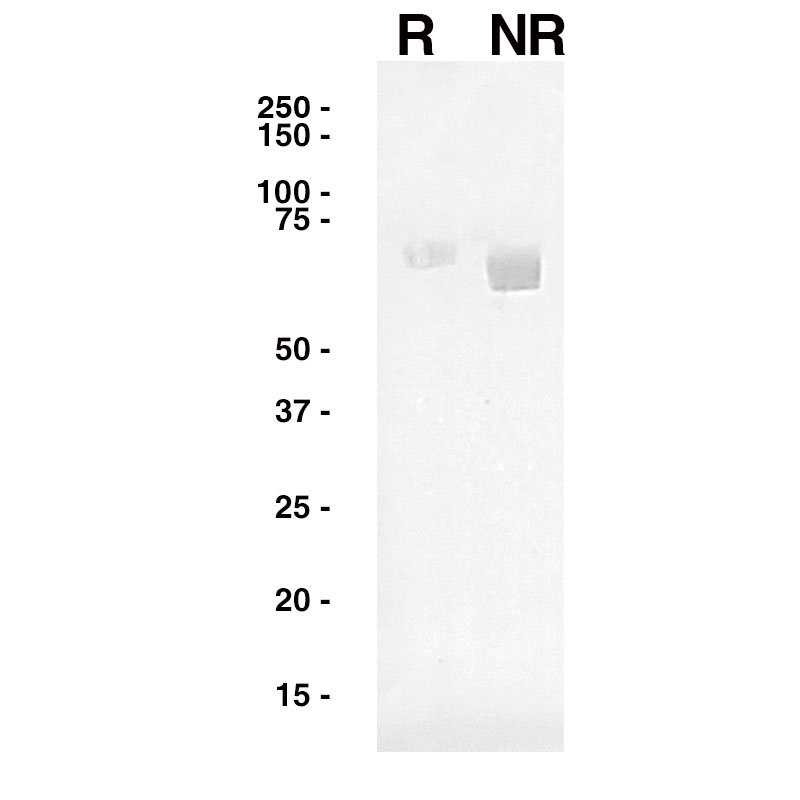Recombinant Influenza A HA (A/California/07/2009(H1N1))
| Code | Size | Price |
|---|
| LEI-F618-100ug | 100 ug | £335.00 |
Quantity:
| LEI-F618-500ug | 500 ug | £1,123.00 |
Quantity:
Prices exclude any Taxes / VAT
Overview
Host Type: Virus
Regulatory Status: RUO
Shipping:
Ambient
Storage:
This lyophilized protein is stable for twelve months when stored at -20°C to -70°C. After aseptic reconstitution this protein may be stored for one month at 2°C to 8°C or for three months at -20°C to -70°C in a manual defrost freezer. Avoid Repeated Freeze Thaw Cycles.
Images
Further Information
Conjugate/Tag/Label:
Purified No Carrier Protein
Format:
Lyophilized powder from 0.01M Phosphate Buffered Saline (150mM NaCI) (PBS) pH 7.4, with 5% Trehalose
Formulation:
Lyophilized powder from 0.01M Phosphate Buffered Saline (150mM NaCI) (PBS) pH 7.4, with 5% Trehalose
Long Description:
Influenza viruses are members of the Orthomyxoviridae family and are phylogenetically grouped into four genera: A, B, C and D1. Influenza A viruses have two surface glycoproteins, hemagglutinin (HA) and neuraminidase (NA), with HA outnumbering NA by five- to 10-fold. Based on HA antigenicity, influenza A viruses are divided into 18 known subtypes (H1-H18), and the HA subtypes are further divided into group 1 (H1, H2, H5, H6, H8, H9, H11, H12, H13, H16, H17, and H18) and group 2 (H3, H4, H7, H10, H14, and H15).
HA is a homotrimer consisting of a globular head domain atop a membrane-proximal stem domain1. The globular head domain of H1-H16 viruses has a membrane-distal receptor binding site that binds to sialylated glycan receptors on host cells to initiate viral entry. H17 and H18, found only in bats, instead use the major histocompatibility complex class II molecule as host receptor. HA mediates virus-host membrane fusion in a pH dependent process that occurs in the endosome.
Influenza annually infects 10 to 20% of the human population causing severe illness and death2. HA is constantly evolving to escape herd immunity and vaccine preparations1. The globular head domain is immunodominant with high plasticity, while the immunosubdominant stalk domain is relatively conserved2. Aquatic birds are the primary reservoir for influenza A1. Reassortment with human and swine viruses can result in new pandemic strains. Broadly neutralizing antibodies that target relatively conserved HA domains and neutralize multiple strains are being studied1.
HA can be used to rapidly quantify influenza virus using the hemagglutination assay, which takes advantage of HA?s ability to agglutinate red blood cells1. HA can also be used in the hemagglutination inhibition assay to measure the virus-neutralizing capacity of antibodies and sera. Additionally, HA is commonly used in laboratories for protein purification and labeling as an HA-tag, a linear epitope consisting of nine amino acids.
NCBI Gene:
23308115
Purity:
?95% by SDS Page
Target:
Flu A, HA
References
1. Wu NC, Wilson IA. Cold Spring Harb Perspect Med. 10(8):a038778. 2020.
2. Kirkpatrick E, Qiu X, Wilson PC, et al. Sci Rep. 8(1):10432. 2018.



